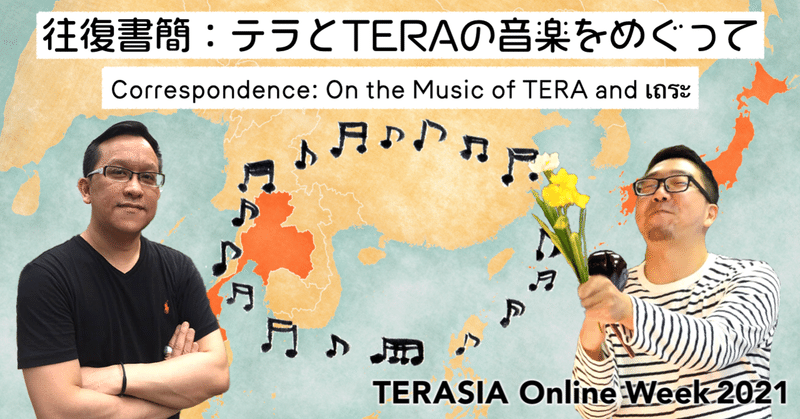
Correspondence: On the Music of TERA and เถระ - 2. The Relationship Between Music, Buddhism and Temples
by Kyojun Tanaka and Great Lekakul
Kyojun Tanaka and Great Lekakul are both musicians who worked respectively on the Japanese and Thai versions of TERA. As performers and researchers, they exchanged letters online on their musical approaches and the creation process of TERA. In this post, we will present the third and fourth letters of their six-letter correspondence.
Letter No. 3 - From Kyojun to Great
Dear Great san,
Thank you for taking the time out of your busy schedule to reply to my letter. It was a fascinating story to read. I learned that the music in TERA Thailand was your composition based on Thai music. As you said, it was wonderful music that reflects the atmosphere of Thailand but also makes us feel like we are in another place at the same time. I felt that the musical effect you intended was realized in a beautiful way.
While the music in TERA Thailand is based on Thai music since its main themes were Thai temples and religion, in TERA Japan, I tried to avoid links with traditional Japanese music. I believe this direction is affected by the way Buddhism is received in Japan and my own upbringing.
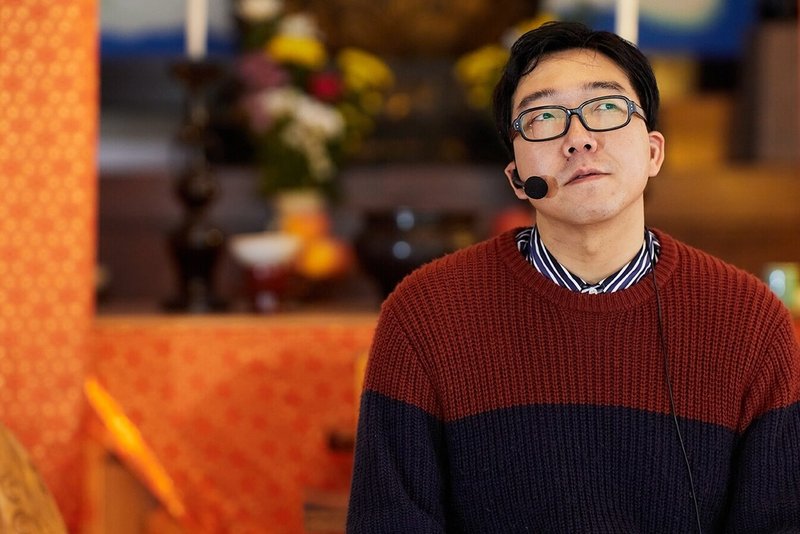
I sometimes think that in Japan, Buddhism is a kind of social custom rather than a religion. While by habit people go to temples to visit their ancestors' grave or to attend a relatives' funeral, not so many consciously regard themselves as Buddhists.
Regarding my background, my father is a monk and a Buddhist scholar. In Japan, many people become monks by succession. So, I was expected to become a monk when I was born, but I didn’t choose to practice Buddhism and became a person who always plays Western musical instruments instead. For TERA, I could have made something like an imitation of traditional Japanese Buddhist music, but that would not describe the essence of my relationship with Japanese Buddhism.
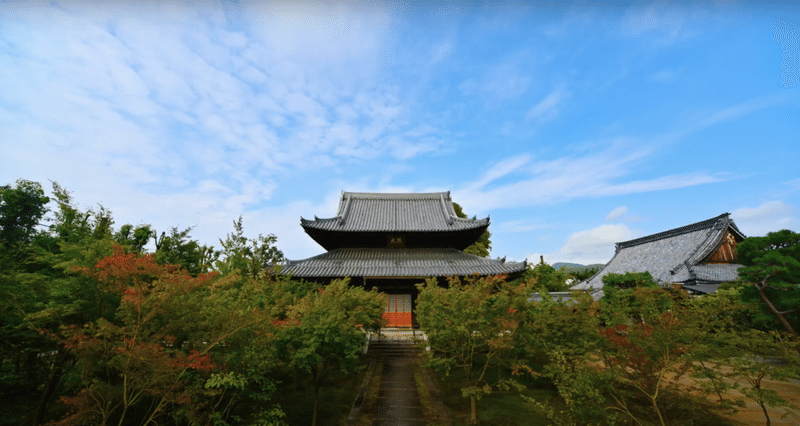
▲ Rinzai School Kōshō-ji, the venue of TERA in Kyoto
For many Japanese people, including myself, Buddhism is something that is very close, yet we don’t exactly know what it is. In this context, I was concerned that if we play gorgeous traditional music at a majestic Japanese temple, it would seem very superficial, as if saying “Buddhism is wonderful” without even knowing what it is. And I was afraid that that magnificence and shallowness would create a wall between the audience and performers. I felt the necessity of letting the audience feel closer to temples and Buddhism with sounds that do not give a feeling of gorgeousness or magnificence. I wanted to include that sense of ‘not really knowing what it is’ in the music.
In this regard, I believe my approach is quite different from that of the Thai production. Could you tell me, if you will, your view on Buddhism and the relationship between Buddhism and music? I'm guessing that it would be evidently different from that of Japanese musicians, and I am personally very curious to know.
Kyojun Tanaka
(Translated from Japanese by Sakura Sawashima)

Letter No. 4 - From Great to Kyojun
Dear Kyojun san,
Um, I'm not sure what you mean by beautiful or wonderful music? In fact, the music in TERA Thailand is based on the theme and the script that relates to the Lanna culture, particularly the story of Wat Pha Lat that leads to the concept of Buddhism and other religions in different cultures.
We rarely used our traditional piece in TERA Thailand (except Prasart Wai), but applied the sonic identity of our musical instruments to represent a new form of music in TERA. For example, Mr. Torpong (the other musician of TERA เถระ) and I composed new music with the effects and the identity of musical instruments such as the Taphon, Ching, and Pii Chum to provide the soundscape, such as earthquake, waterfall, folklife, and also the expression of each player such as anger, happiness, fear, and excitement.
We created our own music for most of our scenes, not traditional or western, but music that can interpret each player's expression and internal voice with their places. I do love the sound of musical instruments that can express emotions and situations in different ways and times, but still relate to their cultures. As I mentioned in my last letter, our music is not traditional but more communicated and brings the audience to many places with the internal voice of the players.

As for Buddhism in Thailand, there is a long story with the different versions of Buddhism and politics inside Thailand. Anyway, music in Thailand mostly serves the auspicious ceremony and funerals in the Buddhist religion. In our culture, most people still believe in Buddhist teaching and show respect to the monk and the Buddha statue (each house mostly has its own Buddha image). So Thai people still come to the Thai temple for Buddhist festivals and also funerals.
In this point, traditional music is significant to serve the ritual and ceremony. For example, we have the “Wai Khru” (the teacher homage ceremony), where Pi Phat or percussion music play a number of pieces to interpret the character of each god of music and teachers' spirits. Apparently, the sound characteristics of instruments and the scales of Thai music represent the feeling of place and time in this ceremony, which most people can perceive.
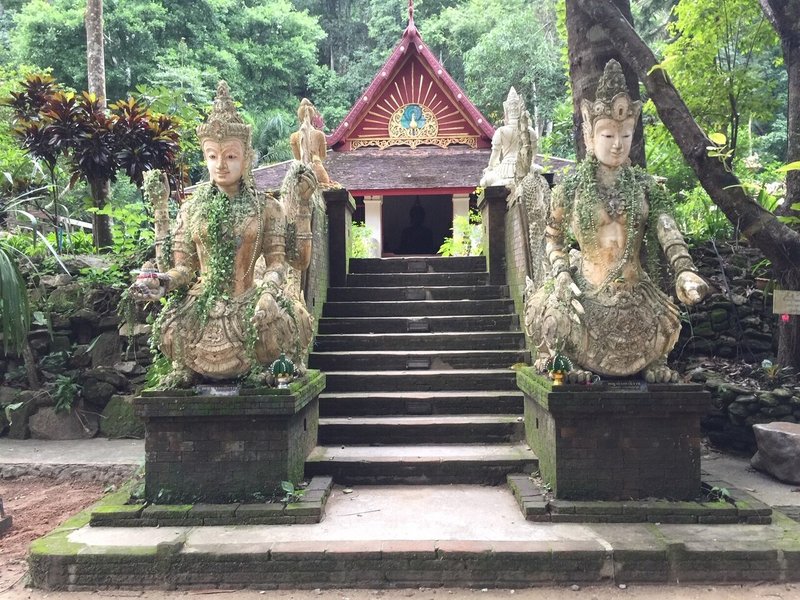
▲Wat Pha Lat, Chiang Mai, the venue of TERA เถระ
I disagree with using Western music in this ceremony, since it will give the wrong message of Buddhism to the Thai people (but in new contemporary dramas or plays, it is quite free to apply). Generally speaking, music and the Buddhist religion in Thailand cannot be separated, since music and the sound identity of Thai instruments illustrate the social meaning and the way in which people think in Buddhism.
Great Lekakul
In order to bridge the distance between Japanese people and Buddhism, Kyojun Tanaka chose to commit to the audience rather than the temple. In contrast, Great Lekakul points out that music and Buddhism in Thailand are inseparable. What will be discussed in the following letters?
Read the Next Post
Related Programs
Theatre performances TERA in Kyoto and TERA เถระ are available for on-demand streaming from Friday, November 19 until Sunday, December 26, 2021. Please visit the link below for details including ticket information.
* Tickets are available for purchase until Sunday, December 12.
Artist Bios
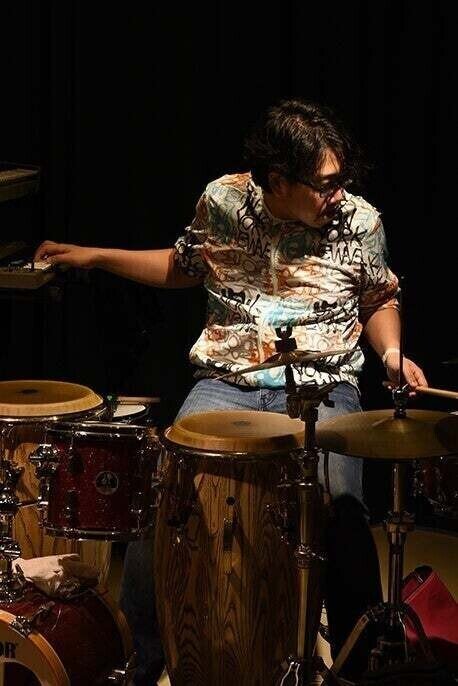
Kyojun Tanaka
Born in Tokyo in 1983, Kyojun Tanaka is a drummer, percussionist, and composer. He started his musical career since he was a student in Tokyo University of the Arts. Following time with the likes of Naruyoshi Kikuchi’s dCprG, he attained his Ph.D., and is currently a rhythm-addicted university staff who travels the world in search of rhythms that make one want to “embrace.” Kyojun performs with his unit MIDOUTEI and the Latin jazz band Septeto Bunga Tropis. He is also engaged in the research and musical training of hsaing waing at the National University of Arts and Culture in Myanmar. “Tera” (2018) was his first participation in Yukari Sakata’s works, and he also performed in its shows in Tunisia (2019).
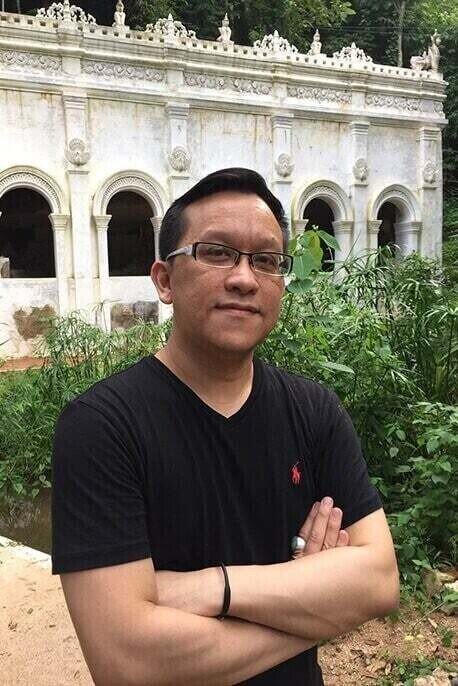
Great Lekakul
After graduating in music from Mahidol University, Great lectured in Japan at Kanda International Language Studies University, teaching music and religions in South East Asia and Thai music performances. Afterward, he studied for his doctorate at SOAS, the University of London in Ethnomusicology. After his graduation, he became a lecturer at SOAS.
With his specialties in Thai and experimental music, he became a member of Korphai, the renowned contemporary Thai music band since 2000. He also co-produced the musical soundtrack of Homrong films on Thai music in 2004. He also got selected as the Thai musicians representative to perform in the Asia Traditional Music Orchestra in Seoul, South Korea. In 2019 he produced and performed his music in Mahajanaka performing arts, highlighting the Buddha’s past life, with Pichet Kluncheun, which was performed in various cities in the UK.
Currently, he is the permanent lecturer in Performing Arts at Chiang Mai University.
頂いたサポートは、打ち合わせ時のコーヒー代として、私たちの創作活動の励みとなります。 Your support supplies our team with an extra cup of coffee to boost creative energies. Thank you!
